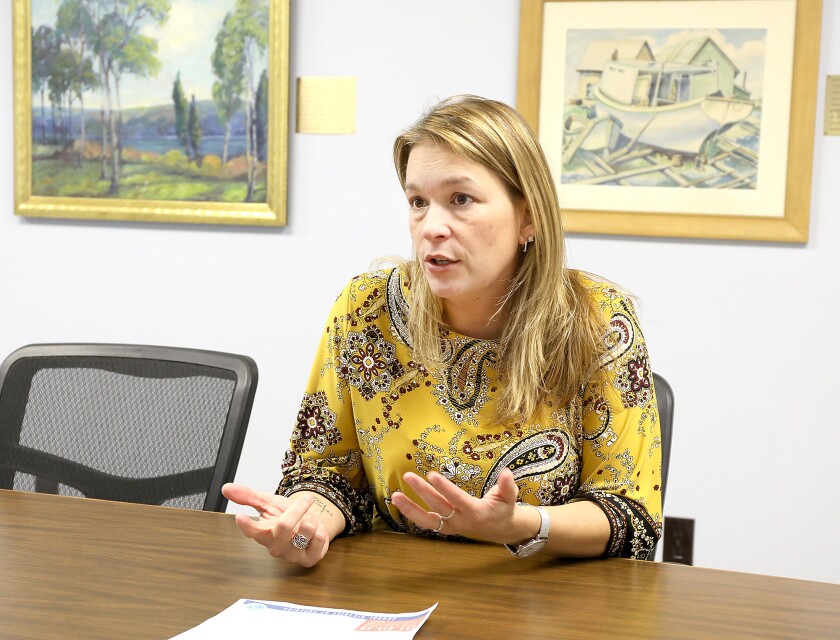SUPERIOR — Officials with the Superior School District are raising awareness about a projected $4 million budget shortfall for the 2024-2025 school year.

“I’ve been trying to remind people we have to make a plan for 2024-2025,” said District Administrator Amy Starzecki.
She outlined the reasons for the lack of funding in a Jan. 13 letter to parents. Inflation, the need to offer competitive wages to maintain fully staffed and declining student enrollment all take a toll.
The biggest challenge facing the district, Starzecki said, is the fact that state funding for schools has been capped at a $10,000 per pupil revenue limit for several years.
Unless something changes, Starzecki said, the district is looking at a $4 million deficit for 2024-2025.
ADVERTISEMENT
"We are not approaching the community for an operating referendum. At this time, the plan to address the deficit will be a reduction in staffing and programs," she wrote.
The letter's purpose was to ensure the community understands the challenges facing the district, according to Starzecki.
"We want to be transparent about how these decisions impact our schools."
There’s a reason Starzecki is sounding the alert now. The school district's budget is currently cushioned by an infusion of federal funding through the Elementary and Secondary School Emergency Relief Fund and Governor’s Emergency Education Relief Grant dollars. The district has received nearly $11 million in ESSER funding over three installments and $657,000 in GEERS money to offset the impact of the COVID-19 pandemic, according to information from business manager Shannon Grindell.
“The purpose of those ESSER funds, I think, were mostly twofold. The first part is to address the immediate needs of the pandemic, so facility upgrades, technology … those kinds of things that we had to do to be able to really keep our school safe and running during the pandemic,” Starzecki said. “Additionally, those funds were intended to address really the learning loss that potentially happened as a result of the pandemic and address some of the mental health needs that also transpired.”
The federal dollars have allowed the district to hire additional reading interventionists — elementary teachers who work through reading and math with students who are below grade level — and four core credit recovery teachers at Superior High School. They have also been used to purchase curriculum and cover costs fpr professional development.
The Superior School Board in November approved dipping into ESSER funds to cover a roughly $1.25 million gap in funding for the 2022-2023 school year. The last of those federal funds, however, must be spent by 2024.
“The learning needs of our students as a result of the pandemic will not be gone in 2024-2025,” Starzecki said.
ADVERTISEMENT
She’s sending out the message now about the upcoming funding crisis because the Wisconsin Legislature will be making its 2023-2025 biennial budget this year. The district is putting together a legislative platform of its own, but individuals can also help.
“I certainly encourage people to reach out to their elected officials at the state level who are part of those decisions to explain the impacts of no funding,” Starzecki said.
The district will be requesting an increase in the per pupil revenue limit and a 90% reimbursement for special education expenses. Currently, only 33% of those costs are reimbursed, Starzecki said, and the district must transfer $7 million from the Fund 10 general education budget annually to cover special education expenses.
Officials are also seeking permanent categorical aid to sustain the staff who support mental health needs and social emotional well being of students, such as social workers, school counselors and check and connect mentors.
“Historically, the state when they’ve allocated funds for mental health support, it’s been one-time money or grant money — you can’t create a sustainable program if you’re getting one-time money,” Starzecki said. “We’ve used ESSER funds to help support some of that programming, so without some categorical aid to support our mental health needs, we would have to reduce in those areas.”
The district also advocates for higher Medicaid reimbursement rates in Wisconsin, a factor in the ability to attract and retain mental health professionals in the area.
Visit the Superior School District website for more information, including recorded school board meetings and agendas.












